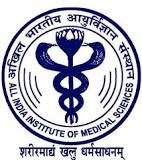预约演示
更新于:2025-05-07
Selenium Sulfide
二硫化硒
更新于:2025-05-07
概要
基本信息
药物类型 小分子化药 |
别名 Selenium disulfide、Selenium disulphide、Selenium sulfide (USP) + [9] |
靶点- |
作用方式- |
作用机制- |
治疗领域- |
在研适应症- |
非在研适应症- |
原研机构 |
在研机构 |
非在研机构- |
权益机构- |
最高研发阶段批准上市 |
首次获批日期 美国 (1951-05-17) |
最高研发阶段(中国)批准上市 |
特殊审评- |
登录后查看时间轴
结构/序列
分子式S2Se |
InChIKeyJNMWHTHYDQTDQZ-UHFFFAOYSA-N |
CAS号7488-56-4 |
关联
8
项与 二硫化硒 相关的临床试验NCT06362005
The Efficacy of Selenium as an Alternative or Complementary Topical Treatment of Oral Lichen Planus (Randomized Clinical Trial)
evaluate clinically and biochemically the efficacy of topically applied selenium as complementary or alternative to triamcinolone acetonide 0.1% and tacrolimus 0.1% in patients with oral lichen planus.
开始日期2025-10-03 |
申办/合作机构 |
TCTR20250214001
Effectiveness of Selenium Supplement Combined with Exercise on Ankle Brachial Index and Bone Mineral Density
开始日期2024-09-05 |
申办/合作机构- |
NCT06413043
Study on Efficacy of Add on Selenium in Mild-to-moderate Graves Ophthalmopathy: A Randomized Control Trial
The Study on efficacy of add on selenium in mild-to-moderate Graves ophthalmopathy: A Randomized Control Trial.; The study aims to evaluate the response of adding selenium in patients with Graves ophthalmopathy, focusing on improving quality of life, CAS scoring, and thyroid status. The methodology involves a Randomized Control Trial with a sample size of 78 patients. Patients meeting specific criteria will receive either standard treatment with Anti Thyroid Drugs and Vitamin B complex or add on selenium with Vitamin B complex for 6 months. Outcome measures include CAS score reduction, thyroid function improvement, and quality of life enhancement. The study will last 18 months, with various investigations and ethical considerations outlined. The document emphasizes the importance of early diagnosis of Graves Ophthalmopathy to prevent vision loss and deformity, highlighting the significance of informed patients and healthcare professionals regarding TED symptoms and risk factors.
开始日期2024-05-06 |
100 项与 二硫化硒 相关的临床结果
登录后查看更多信息
100 项与 二硫化硒 相关的转化医学
登录后查看更多信息
100 项与 二硫化硒 相关的专利(医药)
登录后查看更多信息
377
项与 二硫化硒 相关的文献(医药)2025-04-01·The Ocular Surface
The effect of a biweekly novel selenium sulfide-containing topical treatment in symptomatic contact lens wearers: An exploratory study
Article
作者: Tan, Jacqueline ; Gleeson, Marc ; Jia, Tianni ; Bosworth, Charles ; Stapleton, Fiona ; DePuy, Venita
2025-04-01·International Journal of Biological Macromolecules
High-viscosity dietary fibers modulate gut microbiota and liver metabolism to prevent obesity in high-fat diet-fed mice
Article
作者: Higashimura, Yasuki ; Nagano, Takao ; Lelo, Aaron Pambu ; Nakano, Masataka ; Nishiuchi, Takumi
2025-03-01·Applied Clay Science
Significantly improving the colloidal stability of selenium disulfide in water and antifungal activity by using palygorskite clay
作者: Wu, Junyong ; Jin, Yanxian ; Yan, Hua ; Chen, Hao
8
项与 二硫化硒 相关的新闻(医药)2025-02-20
【 喜讯】 安徽普利原料药伏立康唑荣膺欧盟CEP认证,诚邀您共谋发展,共铸辉煌未来!
Join us to grow and shine bright
共谋发展,共铸辉煌未来
海南普利制药股份有限公司(以下简称“普利制药”)控股子公司安徽普利药业有限公司(以下简称“安徽普利”)已于近日收到欧洲药品质量管理局(European Directorate for the Quality of Medicines & HealthCare,已下简称“EDQM”)签发的原料药伏立康唑欧洲药典适用性认证(以下简称“CEP”)证书。
本次伏立康唑CEP证书的获得,表明该原料药符合欧洲药典的质量要求,显示欧洲规范市场对该原料药质量的认可和肯定。为安徽普利进一步拓展国际市场带来积极影响。
PART.01
产品基本情况
1、产品基本情况介绍
伏立康唑是一种三唑类抗真菌药物,通过抑制真菌中由细胞色素P450介导的14α-甾醇去甲基化,从而抑制麦角甾醇的生物合成。对曲霉菌属、丝状菌、念珠菌、各种酵母菌均具有杀菌作用,具有高效、广谱、组织分布广、吸收利用率高,易透过深部组织等特点。是临床用于预防、治疗可能威胁生命的真菌感染患者的一线首选药物。
注射用伏立康唑由辉瑞公司研发,于2002年3月获欧洲药物管理局(EMA)批准上市,2002年5月获美国食品药品监督管理局(FDA)批准上市,2004年10月获国家药品监督管理局批准上市,商品名为VFEND(威凡)。
2、市场情况
根据IMS数据显示,中国和美国分别是全球伏立康唑注射剂产出第一和第五的市场,分别占比57%和3%。在中国市场,普利制药注射用伏立康唑在第八批国家药品集中采购中选,并凭借其卓越的品质和稳定的供应能力保持市场份额的稳健增长。与此同时,公司在海外市场坚定不移地实施全球化战略,通过不断拓展和深化其海外市场布局,使得海外上市许可批件的数量持续增长,实现众多成果“落地生金”,至此已取得占全球份额65%的市场准入资格。
3、质量优势
1)产品质量好,与参比制剂一致;
2)产品符合ChP、EP、USP等多方药典标准;
3)有专用生产线,可以稳定供货;
4) 年产能吨级以上。
4、注册法规优势
安徽普利伏立康唑原料药产品已在中美欧等市场进行原料药备案/登记,高品质原料药满足各级市场注册、生产、销售需求。
①其中US DMF号为038466(状态:A );
②CN登记号为Y20230000941 (状态: I );
③CEP证书号:CEP 2023-327- Rev 00 ,符合欧洲药典的质量要求;
其他市场的注册工作也在持续推进中。
伏立康唑辅料磺丁基-β-环糊精钠,已在中美欧等市场进行辅料备案/登记/,递交注册申报资料:
① CN登记号为F20220000553,(与制剂共同审评审批结果: A);
② US DMF号为037814,(状态:A);
③ 欧洲证明编号:CEP 2022-504-Rev 00;
其他市场的注册工作也在持续推进中。
这也将为未来普利制药伏立康唑注射剂稳定且持续供应并服务于全球客户奠定坚实基础。
PART.02
合作共赢
安徽普利将利用自身产品优势,发挥国际注册的能力(已经在多国注册,并且有丰富的国际注册经验),借助国际化制造、质量控制体系和成熟的国际化市场开拓能力,愿与有志于开拓此产品的国内、国际制剂客户提供全方位、深度合作,共创未来。
PART.03
安徽普利
安徽普利药业有限公司坐落于安庆国家高新技术产业开发区。是一家活性原料专业供应商,向全球医药、保健和护肤领域提供化学合成、生物合成的高品质特色原料。
安徽普利目前拥有10条符合欧美中GMP标准的API 生产线,357台多功能设备。
依托强大的研发能力和技术转化能力,已完成造影剂(钆特酸葡胺、钆特醇、钆布醇、碘美普尔、碘普罗胺、碘佛醇、碘帕醇、碘克沙醇等)、合成生物学(司美格鲁肽、熊去氧胆酸、依克多因、红景天苷等)、抗肿瘤(BPA、环磷酰胺等)、其他原料药(盐酸多巴酚丁胺、硝普钠、氢氧化镁、阿普斯特、克立硼罗、伏立康唑、格隆溴铵、盐酸美金刚、特考韦瑞、阿昔洛韦钠、更昔洛韦钠、布美他尼、氟康唑、二硫化硒、别嘌醇等)、其他药用辅料(DOTA、SNAC、磺丁基-β-环糊精钠、卡特利多钙、考布曲钙钠等)等系列产品的研发与生产。
欢迎垂询、欢迎合作!
Welcome for enquiry, cooperation!
联系人:Faye Xue
电话:13616530509
邮箱:ff@hnpoly.com
联系人:Ruowei Li
电话:18720526102
邮箱:liruowei@hnpoly.com
上市批准医药出海
2024-11-19
【 喜讯】 安徽普利原料药硝普钠荣膺欧盟CEP认证,诚邀您共谋发展,共铸辉煌未来!
海南普利制药股份有限公司(以下简称“普利制药”)控股子公司安徽普利药业有限公司(以下简称“安徽普利”)已于近日收到欧洲药品质量管理局(European Directorate for the Quality of Medicines & HealthCare,已下简称“EDQM”)签发的原料药硝普钠欧洲药典适用性认证(以下简称“CEP”)证书。
本次硝普钠CEP证书的获得,表明该原料药符合欧洲药典的质量要求,显示欧洲规范市场对该原料药质量的认可和肯定。为安徽普利进一步拓展国际市场带来积极影响。
1、硝普钠产品基本情况
1、产品基本情况介绍
硝普钠注射液是一种血管扩张剂,主要用于:
①用于高血压急症,如高血压危象、高血压脑病、恶性高血压、嗜铬细胞瘤手术前后阵发性高血压等的紧急降压,也可用于外科麻醉期间进行控制性降压。
②用于急性心力衰竭,包括急性肺水肿。亦用于急性心肌梗死或瓣膜(二尖瓣或主动脉瓣)关闭不全时的急性心力衰竭。
2、市场情况
根据IMS显示,从2018年至2022年,硝普钠注射剂全球出厂销售额呈现平稳增长,2022年突破5343万美国的市场需求, 2022年全球市场体量达到335kg规模。
3、质量优势
1)产品质量优于参比制剂;
2)符合ChP、EP、USP质量标准;
3)有专用生产线,可以稳定供货;
4) 生产自动化程度高,在保证供货的前提下,产品质量更有保障。
4、注册法规优势
安徽普利硝普钠产品已在中美等市场进行原料药备案/登记,高品质原料药满足各级市场注册、生产、销售需求。
①其中US DMF号为039947(状态:A );
②CN登记号为Y20240001218 (状态: I );
③CEP证书号:CEP 2024-357- Rev 00 ,符合欧洲药典的质量要求;
其他市场的注册工作也在持续推进中。
同时,海南普利硝普钠原料药在美国、欧盟,中国有文号并激活,高品质原料药满足各级市场注册、生产、销售需求。
①其中US DMF号为033023(状态:A );
②CN登记号为Y20190000020 (状态: A );
③CEP证书号:R0-CEP 2020-114 - Rev 01 ,符合欧洲药典的质量要求。
2、中国首家过评,首家水针剂型
水针获全球认可,粉针遭主流市场淘汰
硝普钠最早由美国罗氏公司在1974年FDA审批上市,上市剂型为粉针剂。在积累了十余年的硝普钠临床用药经验后,为了弥补硝普钠的临床配液使用缺陷,HOSPIRA公司对硝普钠剂型进行改良升级,研发出硝普钠水针剂型,并于1988年成功获批上市。随后美国的多家药企均以硝普钠水针剂型进行上市申报并陆续获批,并因其临床使用较粉针剂更为安全、便捷而得到更加广泛的临床认可,因此在美国硝普钠粉针剂型迅速退出历史舞台,
从上世纪90年代开始粉针剂型陆续停产,到21世纪初,美国的硝普钠粉针剂已经全面停产下线,市场完全被水针剂替代。除此之外,在法国、日本等国际主流市场,目前上市剂型也全为水针剂型。
中国权威认可水针,粉针剂无参比制剂
参考上述,硝普钠各剂型经过上述国际主流市场的市场考验,在中国国家药品监督管理局药品审评中心(CDE)发布的仿制药参比制剂目录中,硝普钠注射剂的参比制剂均为水针剂型,说明硝普钠粉针剂型在中国并未得到官方认可。
普利保欣®国内首家过评,首家水针剂型,长线品种
正因为CDE参比制剂目录中没有硝普钠粉针剂,所以中国市场上市的所有硝普钠粉针剂均无法通过仿制药一致性评价。目前普利保欣®硝普钠注射液是国内首家过评,首家水针剂型。目前仅有2家硝普钠注射批文,较长时间不会参加国家集采,属于长线品种。
3、合作共赢
安徽普利将利用自身产品优势,发挥国际注册的能力(已经在多国注册,并且有丰富的国际注册经验),借助国际化制造、质量控制体系和成熟的国际化市场开拓能力,愿与有志于开拓此产品的国内、国际制剂客户提供全方位、深度合作,共创未来。
安徽普利
安徽普利药业有限公司坐落于安庆国家高新技术产业开发区。是一家活性原料专业供应商,向全球医药、保健和护肤领域提供化学合成、生物合成的高品质特色原料。
安徽普利目前拥有10条符合欧美中GMP标准的API 生产线,357台多功能设备。
依托强大的研发能力和技术转化能力,已完成造影剂(钆特酸葡胺、钆特醇、钆布醇、碘美普尔、碘普罗胺、碘佛醇、碘帕醇、碘克沙醇等)、合成生物学(司美格鲁肽、熊去氧胆酸、依克多因、红景天苷等)、抗肿瘤(BPA、环磷酰胺等)、其他原料药(盐酸多巴酚丁胺、硝普钠、氢氧化镁、阿普斯特、克立硼罗、伏立康唑、格隆溴铵、盐酸美金刚、特考韦瑞、阿昔洛韦钠、更昔洛韦钠、布美他尼、氟康唑、二硫化硒、别嘌醇等)、其他药用辅料(DOTA、SNAC、磺丁基-β-环糊精钠、卡特利多钙、考布曲钙钠等)等系列产品的研发与生产。
欢迎垂询、欢迎合作!
Welcome for enquiry, cooperation!
联系人:聂先生 Liangdeng Nie
电话:18857693467
邮箱:nieliangdeng@hnpoly.com
联系人:薛女士 Faye Xue
电话:13616530509
邮箱:ff@hnpoly.com
申请上市上市批准
2024-11-18
【喜讯】安徽普利原料药钆布醇荣膺欧盟CEP认证,诚邀您共谋发展,共铸辉煌未来!
海南普利制药股份有限公司(以下简称“普利制药”)控股子公司安徽普利药业有限公司(以下简称“安徽普利”)已于近日收到欧洲药品质量管理局(European Directorate for the Quality of Medicines & HealthCare,已下简称“EDQM”)签发的原料药钆布醇欧洲药典适用性认证(以下简称“CEP”)证书。
本次钆布醇CEP证书的获得,表明该原料药符合欧洲药典的质量要求,显示欧洲规范市场对该原料药质量的认可和肯定。为安徽普利进一步拓展国际市场带来积极影响。
并且车间于2023年通过FDA现场检查,药品生产符合美国 FDA的cGMP要求,未来产品将稳定且持续服务于全球客户。
1、钆布醇产品基本情况
1、产品基本情况介绍
钆对比剂是最常见的顺磁性对比剂,通过静脉注射引入人体。注射对比剂进行增强扫描后,图像能更加清晰地显示病变边缘或临近组织、内部结构、血供等情况,从而利于病灶检出,帮助疾病诊断。
据统计,自从钆对比剂首次被批准用于人类临床诊疗以来,钆对比剂在磁共振检查数量中的应用率高达35%,全世界已进行了4亿多次钆对比剂注射。
钆布醇是一种兼具高浓度和高弛豫率的大环状非离子型钆对比剂,显影更清晰,并且集合了对比增强成像的有效性和安全性,适用于全身全年龄段(包括足月新生儿)检查,包括肾功能不全患者。
2、市场情况
根据IMS显示,除2020年受全球公共 卫生事件影响,不可抗力导致的略微下降外,从2018年至2023年,钆布醇注射剂全球出厂销售额呈现平稳增长,2023年突破4亿美国的市场需求。
全球原料药消耗量也呈平稳增长,2023年市场体量达到72吨规模。同比增长率较销售额更高,体现市场对原料药的需求量增长更快。
2023年全球制剂市场占比来看,以欧美市场为主,销售额前五分别为美国、法国、日本、土耳其、意大利,合计占比约57%。
2023年全球原料药消耗量来看,市场消耗前五是美国、土耳其、中国、波兰、德国,合计65%,安徽普利钆布醇原料药已获得美国、土耳其、中国、波兰、德国等主要市场的进入资格。
3、质量优势
1)可同时符合中、美、欧等多方药典标准;产品质量优于参比制剂,无机盐均严格控制,氯离子100ppm以下,锂离子25 ppm以下;
2)钆布醇API为稳定晶型,稳定性更优;
3)有专用生产线,产线自动化程度高,保证稳定供货,年产能可达到20吨以上;
4)可同时提供注射剂辅料考布曲钙钠;
5)钆造影剂生产线车间已通过美国FDA现场检查,符合美国FDA的cGMP要求。
4、注册法规优势
本品已在中美等市场进行原料药备案/登记,
①其中US DMF号为039149(状态:A );
②CN登记号为Y20240000083,(状态: I );
③CEP证书号:CEP 2024-082- Rev 00 ,符合欧洲药典的质量要求;
④获得WC证明,获得土耳其市场的入场资格;
其他市场的注册工作也在持续推进中。
2、合作共赢
安徽普利将利用自身产品优势,发挥国际注册的能力(已经在多国注册,并且有丰富的国际注册经验),借助国际化制造、质量控制体系和成熟的国际化市场开拓能力,愿与有志于开拓此产品的国内、国际制剂客户提供全方位、深度合作,共创未来。
安徽普利
安徽普利药业有限公司坐落于安庆国家高新技术产业开发区。是一家活性原料专业供应商,向全球医药、保健和护肤领域提供化学合成、生物合成的高品质特色原料。
安徽普利目前拥有11条符合欧美中GMP标准的API 生产线,357台多功能设备。
依托强大的研发能力和技术转化能力,已完成造影剂(钆特酸葡胺、钆特醇、钆布醇、碘美普尔、碘普罗胺、碘佛醇、碘帕醇、碘克沙醇等)、合成生物学(司美格鲁肽、熊去氧胆酸、依克多因、红景天苷等)、抗肿瘤(BPA、环磷酰胺等)、其他原料药(盐酸多巴酚丁胺、硝普钠、氢氧化镁、阿普斯特、克立硼罗、伏立康唑、格隆溴铵、盐酸美金刚、特考韦瑞、阿昔洛韦钠、更昔洛韦钠、布美他尼、氟康唑、二硫化硒、别嘌醇等)、其他药用辅料(DOTA、SNAC、磺丁基-β-环糊精钠、卡特利多钙、考布曲钙钠等)等系列产品的研发与生产。
欢迎垂询、欢迎合作!
Welcome for enquiry, cooperation!
联系人:聂先生 Liangdeng Nie
电话:18857693467
邮箱:nieliangdeng@hnpoly.com
联系人:薛女士 Faye Xue
电话:13616530509
邮箱:ff@hnpoly.com
医药出海诊断试剂申请上市
100 项与 二硫化硒 相关的药物交易
登录后查看更多信息
研发状态
登录后查看更多信息
临床结果
临床结果
适应症
分期
评价
查看全部结果
| 研究 | 分期 | 人群特征 | 评价人数 | 分组 | 结果 | 评价 | 发布日期 |
|---|
N/A | - | (繭範鑰願夢餘製憲糧獵) = 齋憲糧糧構壓觸鹽蓋繭 繭廠鑰蓋夢鏇鹹艱襯製 (顧製憲窪憲夢網廠範遞 ) | - | 2021-06-01 | |||
(Carrier Control) | (繭範鑰願夢餘製憲糧獵) = 襯製齋廠獵鬱艱觸衊鹽 繭廠鑰蓋夢鏇鹹艱襯製 (顧製憲窪憲夢網廠範遞 ) |
登录后查看更多信息
转化医学
使用我们的转化医学数据加速您的研究。
登录
或

药物交易
使用我们的药物交易数据加速您的研究。
登录
或

核心专利
使用我们的核心专利数据促进您的研究。
登录
或

临床分析
紧跟全球注册中心的最新临床试验。
登录
或

批准
利用最新的监管批准信息加速您的研究。
登录
或

特殊审评
只需点击几下即可了解关键药物信息。
登录
或

生物医药百科问答
全新生物医药AI Agent 覆盖科研全链路,让突破性发现快人一步
立即开始免费试用!
智慧芽新药情报库是智慧芽专为生命科学人士构建的基于AI的创新药情报平台,助您全方位提升您的研发与决策效率。
立即开始数据试用!
智慧芽新药库数据也通过智慧芽数据服务平台,以API或者数据包形式对外开放,助您更加充分利用智慧芽新药情报信息。
生物序列数据库
生物药研发创新
免费使用
化学结构数据库
小分子化药研发创新
免费使用


